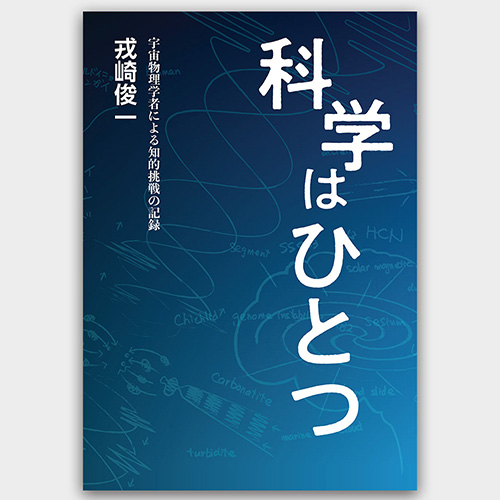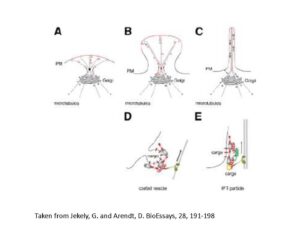カルシウムを含む物質の生物鉱化作用の進化シナリオ:A possible scenario for the evolution of the biomineralization of calcium containing materials
炭酸カルシウムやリン酸カルシウムのようなカルシウムを含む物質の生物鉱化作用の獲得は、動物にとって重要である。その進化シナリオについてまとめてみた。1)炭酸カルシウムの生物鉱化作用が、光合成の炭素源獲得機構の副産物として獲得された:シアノバクテリアの光合成における炭素源として重炭酸イオンを利用するときに、炭酸カルシウムが合成される。この硬い外殻は、外部からの脅威(捕食者、波のような力学的な力、そして乾燥)からだけでなく、有害なUV-B紫外線放射(波長280-312 nm)から、内部の生物体を守る働きを持っていた。生体起源の炭酸カルシウムは、たくさんの小粒子(数百ナノメートル)から構成されており、短い波長をもつ紫外線を、長い波長をもつ可視光よりも、選択的に強く散乱する。2)後生動物の共通祖先は、炭酸カルシウム効果に必要な遺伝子を、光合成細菌と共生を通して、遺伝子水平伝搬でエディアカラ期に得た。リン酸に富む(たぶん過飽和)環境にあった後生動物においては、炭酸カルシウム鉱化用の遺伝子を少し変化させて、リン酸カルシウム(ハイドロアパタイト)を持つ種も現れた。3)後生動物において外骨格が、紫外線防御と力学的保護の用途で大きく発達した。特に、三葉虫は、炭酸カルシウムのレンズを使った撮像型の眼を最初に発明し、光スイッチによる後生動物の爆発的進化をトリガした。4)脊椎動物の祖先は、エディアカラ期に、リン酸欠乏の環境に適応するため、リン酸の骨格を体内に内蔵するようになった。地球表層においては、リン酸欠乏の環境がより一般的である。
Biomineralization of calcium containing materials such as calcium carbonate or calcium phosphate is important in the evolution of animals. I here present a possible scenario for its evolution: 1) Biomineralization of calcium carbonate (calcification) started as the byproduct of uptaking of bicarbonate ions as a carbon source for photosynthesis in cyanobacteria. The hard external shells protect soft biological bodies inside against harmful UV-B radiation (280-315 nm) as well as other external threatening (predators, mechanical forces like waves, and desiccation): Since biological calcium carbonate is composed of numerous numbers of particles as small as several hundred nanometers, it selectively scatters UV radiation with shorter wavelengths than optical radiation with longer wavelengths. 2) The common ancestor of metazoans got genes necessary for calcification by horizontal gene transfer through symbiosis with photosynthetic bacteria in Ediacaran period. Some of them also have external skeletons made by hydroxylapatite (calcium phosphate) in phosphate rich (probably oversaturated) environment with minor changes of the genes for calcification. 3) The external skeletons were developed extensively in metazoans for sunshield and mechanical protection in Cambrian period. In particular, Trilobite invented first imaging eyes with calcite lenses and triggered explosive evolution of metazoans through the light switch. 4) Ancestors of vertebrate started to store the apatite skeletons inside their body to adapt phosphate poor (unsaturated) environments as early as Ediacaran period, since phosphate starvation is commonly seen on the Earth.
書籍版『科学はひとつ』のご案内
戎崎俊一 著
学而図書/四六判 並製320頁/本体2,400円+税
12年にわたり執筆されてきた記事を精選し、「地震と津波防災」など全9章に再編。すべての章に著者書き下ろしの解説を加えて集成した一冊。



